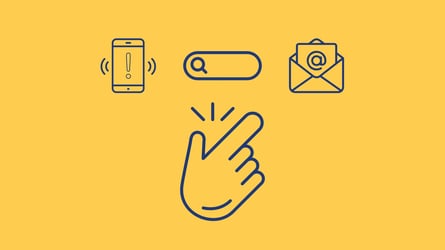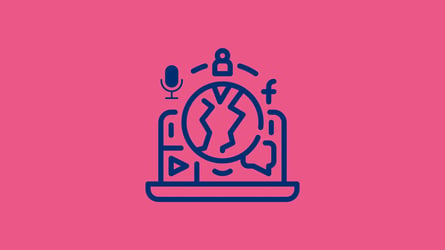Big Data has become one of the key buzzwords for businesses everywhere over the last few years. With data of all kinds being produced in record amounts every year, collating and analyzing this information will give businesses more insights than ever before into their customers, their industries as a whole and perhaps even let them predict what might happen in the future.
Here is just one of many incredible big data stats: EVERY MINUTE we send 204 million emails, share 2,5 million pieces of content on Facebook, send 277,000 Tweets, and post 216,000 photos on Instagram.
Suffice it to say, there is a huge amount of data out there. But making sense of millions (perhaps billions) of data points can be time consuming and difficult without powerful technology, particularly when this data is unstructured, as is this case with online textual data in the form of news articles, social media posts, forums comments and much, much more.
In fact such is the complexity of this process that there has been somewhat of a backlash against big data insomuch as there are now ideas about big data’s importance being overstated because it is too “big” and unruly.
In a sense this point of view is correct. Without structure, big data is unusable. It is just a mass of unrelated information that would take years to comprehend and even then may not yield any insights. But if structure can be overlaid quickly and effectively and then analysed, that is when big data starts to become smart data. Here at Talkwalker, we wanted to explain exactly how this happens and how this process can be a bit like looking for a partner in life as you'll see...
1. Search: At the beginning
At the beginning, from a computer’s perspective, all social data is just words on a page from different sources such as Twitter posts, Facebook posts, news articles, blogs and forums comments. The first step of course is to look for a certain topic in this data, as you would on say Google. So lets say we type in “Talkwalker” into our social data analytics platform. At this stage, without any other parameters or filters what we would have is just a very long list of url’s or post titles in no particular order.
As you can imagine, with such a limited filter the insights we can gain from such information are pretty limited too. All we would really be able to know is how many times a certain term has been mentioned online. This isn't irrelevant information by any means. For companies looking to expand their brand awareness this may in fact be important information.
But to make our social data really sing we need more.
2. Filter: Cutting you data down to size
The next step would be to add a variety of potential filters. A basic one for example would be time frame. Do you want results from just the last week or over the last 2 years? Or perhaps even just for the last hour.
We also want to know which media channels these online “mentions” are coming from. Are they Twitter posts, YouTube videos, news article or blog posts? And how many are there of each?
For global companies, knowing the country that posts originate from and the language they are written in is also key. Are there more posts from Britain or the US? Is there more online content about the brand in Spanish or Portuguese?
With just the addition of a few filters our unruly ocean of social data has been divided into more manageable rivers.
These rivers can then be combined and divided at will to create multiple streams of data allowing you to really isolate the information you need. For example, for a UK brand that has just launched a new product and started a big Twitter campaign, you might create a stream of data just looking at Twitter results from the UK over the last 2 weeks.
At this stage you've already made a big difference to the usability of your data. With these multiple filters you can now get a clearer idea of exactly when and where mentions about a particular topic are coming from.
There are plenty of insights to be gathered at this stage, but to really make your social data smart you need to go one step further.
3. Analyze: Adding a pinch of analytics
If filtering this information allows us to create manageable streams of data, analytics helps us turn it into real insights that we can use to help a business grow.
Using advanced analytics, we can now look at the most important themes that are appearing in this data and see for example which words are most associated with certain brands. We can also see which influencers on Twitter or Facebook are having the biggest impact on a brand, positively or negatively. Or see who has been the most influential, whether it’s men or women that are talking about a topic or analyse the sentiment towards a particular campaign or product.
It’s this process of searching, filtering and analysing large volumes of unkempt data that brings it to life as a source of actionable insight for companies. Knowing that your brand has been mentioned 2 million times over the last month isn’t irrelevant, but knowing that your brand has been mentioned 2 million times with a quarter of those mentions coming from men based in the US using Twitter on the evening of May 1st due to a news article published in the New York Times, is infinitely more informative.
At every level of filtering and analysis you can get key insights from your social data but each time you go further, your data gets smarter.
Of course, being able to use and incorporate such insights into business strategy will (for now at least!) fall to the people in the company with expertise in each area but smart data lets professionals quickly jump from point A to point B.
And once you’ve managed to refine the data to this level it can be used in a myriad different ways.
4. Using the Data: Insights for every need
As more and more people use social networks, blogs and forums to discuss the issues that matter to them, the insights that can be gathered from these sources become more representative of the general public’s view and therefore more valuable and accurate.
For example in a crisis, a brand can monitor all mentions of their brand across multiple media channels and then look for the hashtags most associated to their brand to find potential sources of social media negativity and then react to it.
For product campaigns, data on levels of buzz in particular countries or languages can be combined with sales data to get an accurate picture of how the public is responding to a particular campaign.
For advertising, the most used keywords around a particular topic can be examined to find the right targets for messaging.
The uses of social data refined to this level really are potentially limitless and are increasing all the time with companies and organisations in all fields from retailers and telecommunications to political parties and NGO’s finding the value of social data for their sector.
The final crucial stage of the process is distributing this data to the right people, in the rights formats and at the right time. Insights from social data can be used across all departments from C-Suite to customer service so delivering the relevant insights quickly to each department helps to make sure you are getting the most out of the insights you have uncovered.
5. Data + Data = Better Decisions
A sometimes under publicised benefit of social big data is its potential to be combined with other data sources. Using API’s or just through exporting results, social data can be combined with other customer data or data from the growing range of wearable devices or from other "smart” devices. Combining these powerful data sets creates an even more accurate and nuanced view of your companies activities both online and offline as well providing a more detailed picture of your customers.
Talk of the merits of big data has been around for some time with some believing it is on the demise. But in reality, this is an unlikely path. As technology advances and our experience with handling giant data sets grows, our ability to manipulate this information should only increase. By converting big data to smart data companies will continue to find key insights for their business and make decisions based on better, more relevant data.



